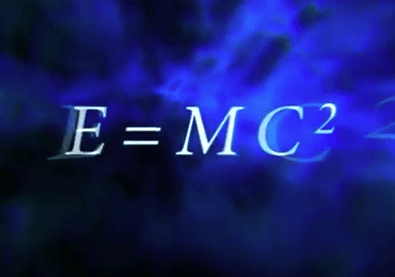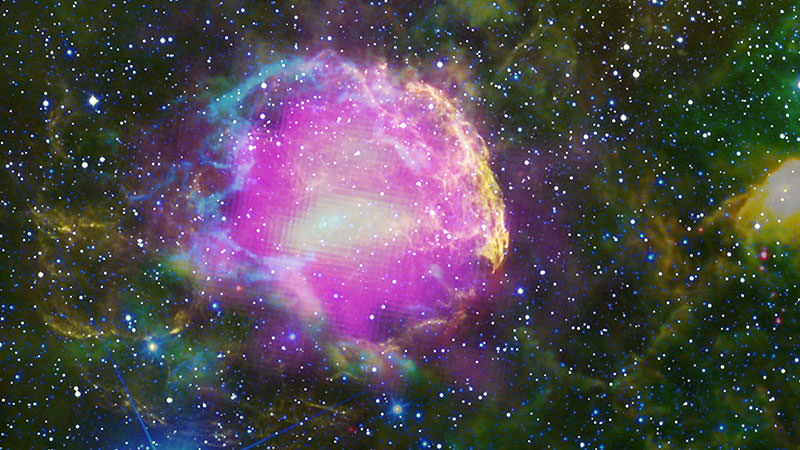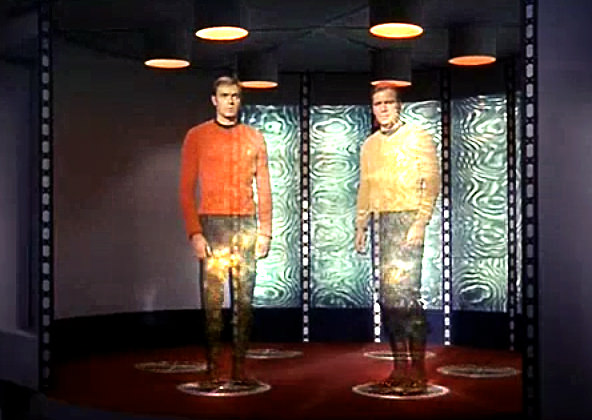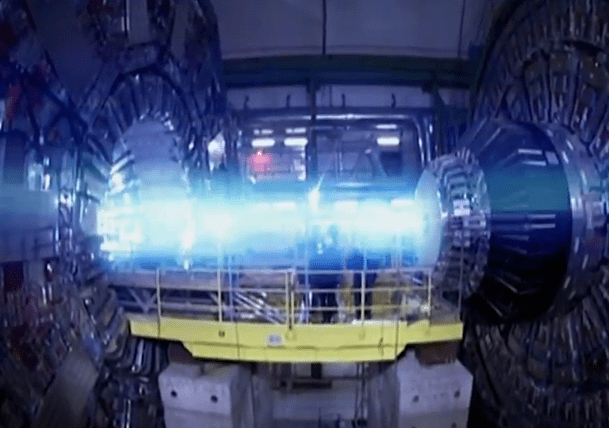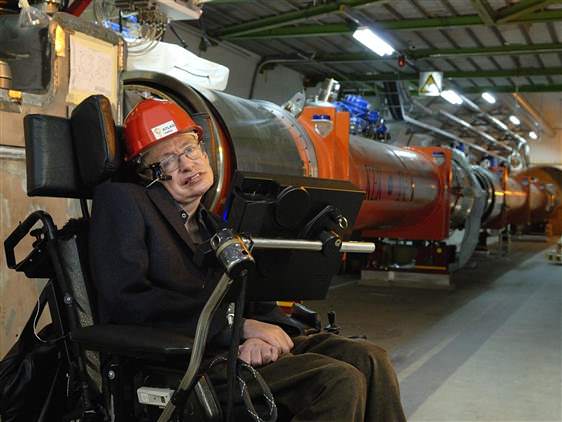No tears in heaven? Expedition 35 Commander Chris Hadfield shows that while you really can cry in space, tears don’t fall like they do here on Earth, and instead just end up as a big ball of water on your face. It’s physics, baby!
NuSTAR Puts New Spin On Supermassive Black Holes
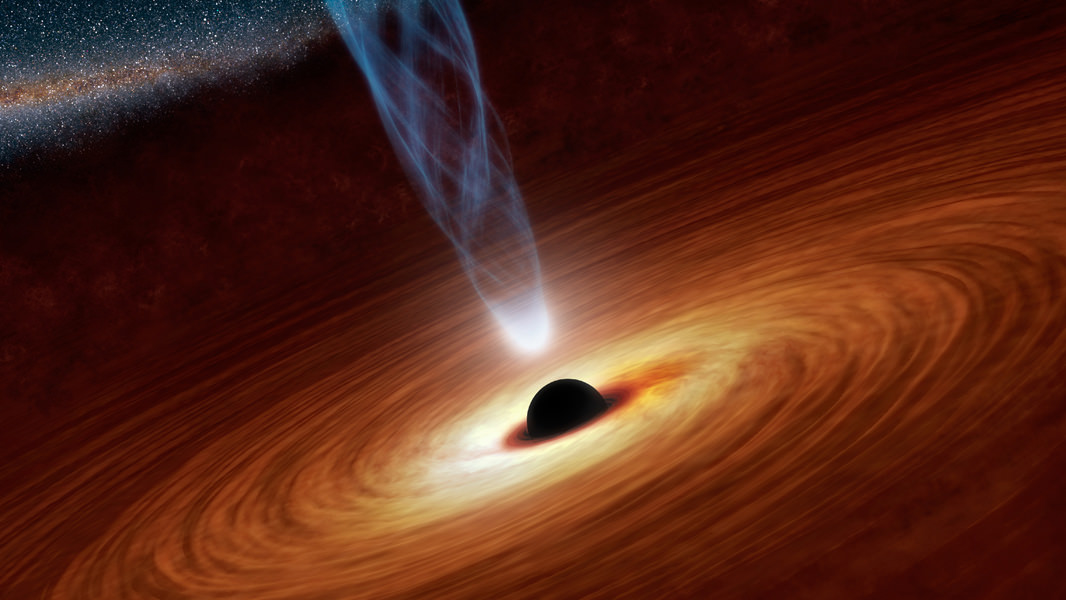
Checking out the spin rate on a supermassive black hole is a great way for astronomers to test Einstein’s theory under extreme conditions – and take a close look at how intense gravity distorts the fabric of space-time. Now, imagine a monster … one that has a mass of about 2 million times that of our Sun, measures 2 million miles in diameter and rotating so fast that it’s nearly breaking the speed of light.
A fantasy? Not hardly. It’s a supermassive black hole located at the center of spiral galaxy NGC 1365 – and it is about to teach us a whole lot more about how black holes and galaxies mature.
What makes researchers so confident they have finally taken definitive calculations of such an incredible spin rate in a distant galaxy? Thanks to data taken by the Nuclear Spectroscopic Telescope Array, or NuSTAR, and the European Space Agency’s XMM-Newton X-ray satellites, the team of scientists has peered into the heart of NGC 1365 with x-ray eyes – taking note of the location of the event horizon – the edge of the spinning hole where surrounding space begins to be dragged into the mouth of the beast.
“We can trace matter as it swirls into a black hole using X-rays emitted from regions very close to the black hole,” said the coauthor of a new study, NuSTAR principal investigator Fiona Harrison of the California Institute of Technology in Pasadena. “The radiation we see is warped and distorted by the motions of particles and the black hole’s incredibly strong gravity.”
However, the studies didn’t stop there, they advanced to the inner edge to encompass the location of the accretion disk. Here is the “Innermost Stable Circular Orbit” – the proverbial point of no return. This region is directly related to a black hole’s spin rate. Because space-time is distorted in this area, some of it can get even closer to the ISCO before being pulled in. What makes the current data so compelling is to see deeper into the black hole through a broader range of x-rays, allowing astronomers to see beyond veiling clouds of dust which only confused past readings. These new findings show us it isn’t the dust that distorts the x-rays – but the crushing gravity.
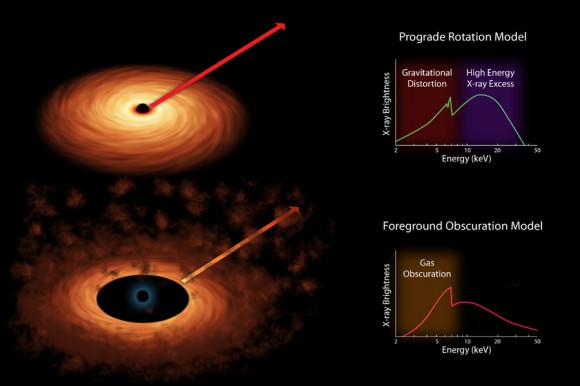
“This is the first time anyone has accurately measured the spin of a supermassive black hole,” said lead author Guido Risaliti of the Harvard-Smithsonian Center for Astrophysics (CfA) and INAF — Arcetri Observatory.
“If I could have added one instrument to XMM-Newton, it would have been a telescope like NuSTAR,” said Norbert Schartel, XMM-Newton Project Scientist at the European Space Astronomy Center in Madrid. “The high-energy X-rays provided an essential missing puzzle piece for solving this problem.”
Even though the central black hole in NGC 1365 is a monster now, it didn’t begin as one. Like all things, including the galaxy itself, it evolved with time. Over millions of years it gained in girth as it consumed stars and gas – possibly even merging with other black holes along the way.
“The black hole’s spin is a memory, a record, of the past history of the galaxy as a whole,” explained Risaliti.
“These monsters, with masses from millions to billions of times that of the sun, are formed as small seeds in the early universe and grow by swallowing stars and gas in their host galaxies, merging with other giant black holes when galaxies collide, or both,” said the study’s lead author, Guido Risaliti of the Harvard-Smithsonian Center for Astrophysics in Cambridge, Mass., and the Italian National Institute for Astrophysics.
This new spin on black holes has shown us that a monster can emerge from “ordered accretion” – and not simply random multiple events. The team will continue their studies to see how factors other than black hole spin changes over time and continue to observe several other supermassive black holes with NuSTAR and XMM-Newton.
“This is hugely important to the field of black hole science,” said Lou Kaluzienski, NuSTAR program scientist at NASA Headquarters in Washington, D.C. “NASA and ESA telescopes tackled this problem together. In tandem with the lower-energy X-ray observations carried out with XMM-Newton, NuSTAR’s unprecedented capabilities for measuring the higher energy X-rays provided an essential, missing puzzle piece for unraveling this problem.”
Original Story Source: JPL/NASA News Release.
Pulsar Jackpot Scours Old Data for New Discoveries
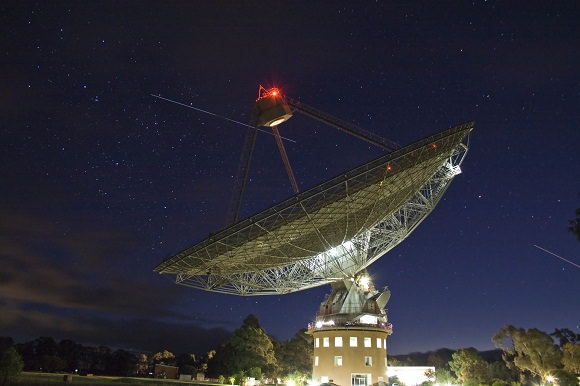
Chalk another one up for Citizen Science. Earlier this month, researchers announced the discovery of 24 new pulsars. To date, thousands of pulsars have been discovered, but what’s truly fascinating about this month’s discovery is that came from culling through old data using a new method.
A pulsar is a dense, highly magnetized, swiftly rotating remnant of a supernova explosion. Pulsars where first discovered by Jocelyn Bell Burnell and Antony Hewish in 1967. The discovery of a precisely timed radio beacon initially suggested to some that they were the product of an artificial intelligence. In fact, for a very brief time, pulsars were known as LGM’s, for “Little Green Men.” Today, we know that pulsars are the product of the natural death of massive stars.
The data set used for the discovery comes from the Parkes 64-metre radio observatory based out of New South Wales, Australia. The installation was the first to receive telemetry from the Apollo 11 astronauts on the Moon and was made famous in the movie The Dish. The Parkes Multi-Beam Pulsar Survey (PMPS) was conducted in the late 1990’s, making thousands of 35-minute recordings across the plane of the Milky Way galaxy. This survey turned up over 800 pulsars and generated 4 terabytes of data. (Just think of how large 4 terabytes was in the 90’s!)
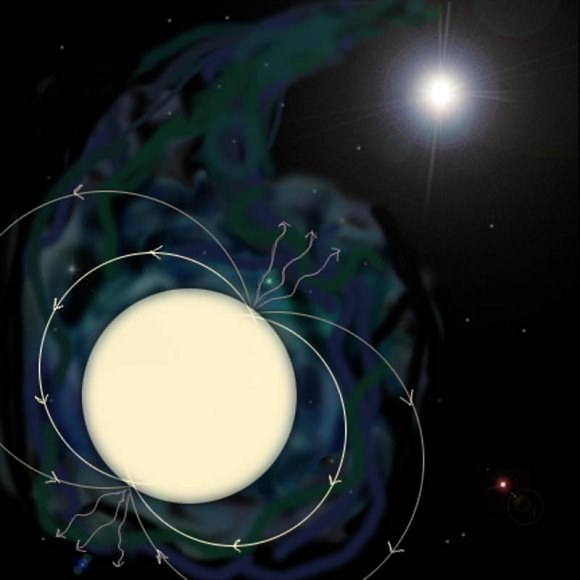
The nature of these discoveries presented theoretical astrophysicists with a dilemma. Namely, the number of short period and binary pulsars was lower than expected. Clearly, there were more pulsars in the data waiting to be found.
Enter Citizen Science. Using a program known as Einstein@Home, researchers were able to sift though the recordings using innovative modeling techniques to tease out 24 new pulsars from the data.
“The method… is only possible with the computing resources provided by Einstein@Home” Benjamin Knispel of the Max Planck Institute for Gravitational Physics told the MIT Technology Review in a recent interview. The study utilized over 17,000 CPU core years to complete.
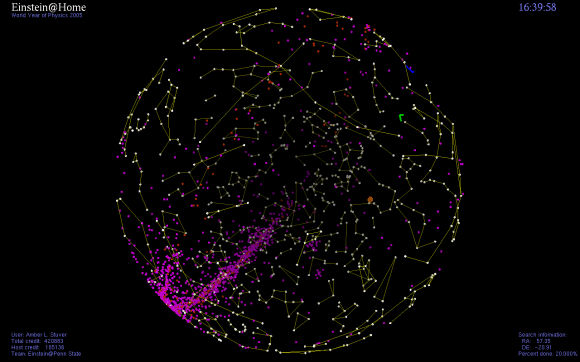
Einstein@Home is a program uniquely adapted to accomplish this feat. Begun in 2005, Einstein@Home is a distributed computing project which utilizes computing power while machines are idling to search through downloaded data packets. Similar to the original distributed computing program SETI@Home which searches for extraterrestrial signals, Einstein@Home culls through data from the LIGO (Laser Interferometer Gravitational Wave Observatory) looking for gravity waves. In 2009, the Einstein@Home survey was expanded to include radio astronomy data from the Arecibo radio telescope and later the Parkes observatory.
Among the discoveries were some rare finds. For example, PSR J1748-3009 Has the highest known dispersion measure of any millisecond pulsar (The dispersion measure is the density of free electrons observed moving towards the viewer). Another find, J1750-2531 is thought to belong to a class of intermediate-mass binary pulsars. 6 of the 24 pulsars discovered were part of binary systems.
These discoveries also have implications for the ongoing hunt for gravity waves by such projects as LIGO. Specifically, a through census of binary pulsars in the galaxy will give scientists a model for the predicted rate of binary pulsar mergers. Unlike radio surveys, LIGO seeks to detect these events via the copious amount of gravity waves such mergers should generate. Begun in 2002, LIGO consists of two gravity wave observatories, one in Hanford Washington and one in Livingston Louisiana just outside of Baton Rouge. Each LIGO detector consists of two 2 kilometre Fabry-Pérot arms in an “L” configuration which allow for ultra-precise measurements of a 200 watt laser beam shot through them. Two detectors are required to pin-point the direction of an incoming gravity wave on the celestial sphere. You can see the orientation of the “L’s” on the display on the Einstein@Home screensaver. Two geographically separate detectors are also required to rule out local interference. A gravity wave from a galactic source would ripple straight through the Earth.
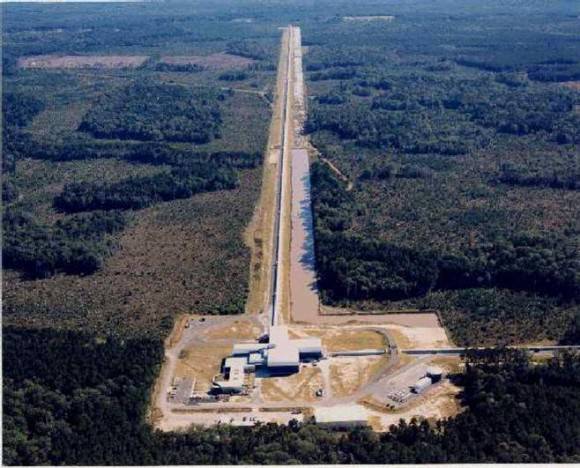
Such a movement would be tiny, on the order of 1/1,000th the diameter of a proton, unnoticed by all except the LIGO detectors. To date, LIGO has yet to detect gravity waves, although there have been some false alarms. Scientists regularly interject test signals into the data to see if system catches them. The lack of detection of gravity waves by LIGO has put some constraints on certain events. For example, LIGO reported a non-detection of gravity waves during the February 2007 short gamma-ray burst event GRB 070201. The event arrived from the direction of the Andromeda Galaxy, and thus was thought to have been relatively nearby in the universe. Such bursts are thought to be caused by neutron star and/or black holes mergers. The lack of detection by LIGO suggests a more distant event. LIGO should be able to detect a gravitational wave event out to 70 million light years, and Advanced LIGO (AdLIGO) is set to go online in 2014 and will increase its sensitivity tenfold.
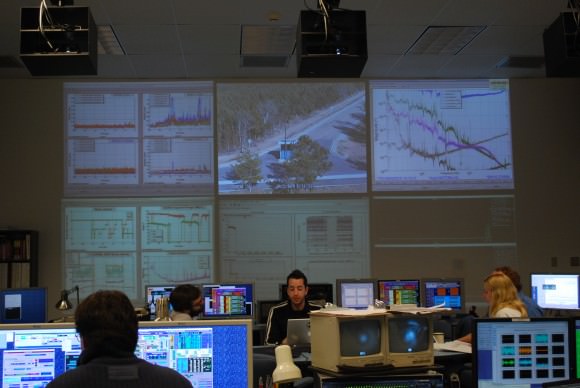
Knowledge of where these potential pulsar mergers are by such discoveries as the Parkes radio survey will also give LIGO researchers clues of targets to focus on. “The search for pulsars isn’t easy, especially for these “quiet” ones that aren’t doing the equivalent of “screaming” for our attention,” Says LIGO Livingston Data Analysis and EPO Scientist Amber Stuver. The LIGO consortium developed the data analysis technique used by Einstein@Home. The direct detection of gravitational waves by LIGO or AdLIGO would be an announcement perhaps on par with CERN’s discovery of the Higgs Boson last year. This would also open up a whole new field of gravitational wave astronomy and perhaps give new stimulus to the European Space Agencies’ proposed Laser Interferometer Space Antenna (LISA) space-based gravity wave detector. Congrats to the team at Parkes on their discovery… perhaps we’ll have the first gravity wave detection announcement out of LIGO as well in years to come!
-Read the original paper on the discovery of 24 new pulsars here.
-Amber Stuver blogs about Einstein@Home & the spin-off applications of gravity wave technology at Living LIGO.
-Parkes radio telescope image is copyrighted and used with the permission of CSIRO Operations Scientist John Sarkissian.
-For a fascinating read on the hunt for gravity waves, check out Gravity’s Ghost.
The Secret of the Stars
“Say, do you like mystery stories? Well we have one for you. The concept: relativity.”
Well look at that, it’s a new video from John D. Boswell — aka melodysheep — which goes into autotuned detail about one of the standard principles of astrophysics, Einstein’s theory of general relativity.
Featuring clips from Michio Kaku, Brian Cox, Neil deGrasse Tyson, Brian Greene and Lisa Randall, I’d say E=mc(awesome).
John has been entertaining science fans with his Symphony of Science mixes since 2009, when his first video in the series — “A Glorious Dawn” featuring Carl Sagan — was released. Now John’s videos are eagerly anticipated by fans (like me) who follow him on YouTube and on Twitter as @musicalscience.
“E = mc2… that is the engine that lights up the stars.”
(What does Einstein’s famous mass-energy equivalence equation mean? For a brief and basic explanation, check out the American Museum of Natural History’s page here.)
Light-travel-time Effect Finds New Astronomical Applications
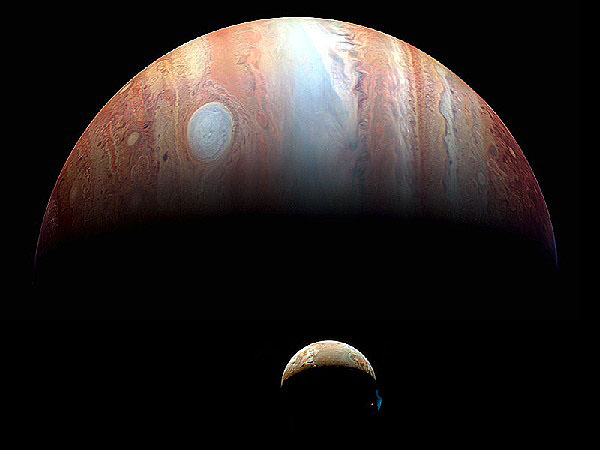
Sometimes the tried and true methods are still the best, even in observational astronomy. Researchers at the University of Prague demonstrated this recently in a study of the eclipsing binary system V994 Herculis (V994 Her).
Researchers P. Zasche and R. Uhla used a method known as the Light-travel-time Effect to verify that V994 Her is actually a double binary. If that method sounds familiar to any astronomy historians out there, that’s because it was first used by 17th century astronomers to gauge the speed of light.
V994 Her is a rarity in the skies. While many eclipsing binaries are known, V994 Her is one of only six quadruple eclipsing binary stars discovered. An eclipsing binary star is a system where the two stars pass one in front of the other from our line of sight. Although too close to be split visually, eclipsing binaries rise and fall in brightness periodically. One famous example is the star Algol (Beta Persei) in the constellation Perseus. Algol means the “Demon Star” in Arabic, which suggests that its curious nature was known to Arab astronomers in pre-telescopic times.
Continue reading “Light-travel-time Effect Finds New Astronomical Applications”
Watch a Million Particles Collide
What happens when you give 1,000,000 particles their own gravity and spring repulsion and send them out to play? Watch the video above and find out.
This was created by David Moore, a self-taught computer programmer, aspiring physicist and student at San Diego Miramar College. It’s a custom code made with SDL/C++ and 8 days of render time. According to David there’s a bug at the end “where particles can get arbitrarily high energy… but before that it’s very physically accurate!”
It’s fascinating to watch the attraction process take place — one might envision a similar process occurring in the early Universe with the formation of the first galaxies and galactic clusters out of a hot, uniform state. Plus it’s great to see young talented minds like David’s working on such projects for fun!
There just might be hope for us after all.
Video by David Moore
Supernovae Seed Universe With Cosmic Rays
In a wave of media releases, the latest studies performed by NASA’s Fermi Gamma-ray Space Telescope are lighting up the world of particle astrophysics with the news of how supernovae could be the progenitor of cosmic rays. These subatomic particles are mainly protons, cruising along through space at nearly the speed of light. The rest are electrons and atomic nuclei. When they meet up with a magnetic field, their paths change like a bumper car in an amusement park – but there’s nothing amusing about not knowing their origins. Now, four years of hard work done by scientists at the Kavli Institute for Particle Astrophysics and Cosmology at the Department of Energy’s (DOE) SLAC National Accelerator Laboratory has paid off. There is evidence of how cosmic rays are born.
“The energies of these protons are far beyond what the most powerful particle colliders on Earth can produce,” said Stefan Funk, astrophysicist with the Kavli Institute and Stanford University, who led the analysis. “In the last century we’ve learned a lot about cosmic rays as they arrive here. We’ve even had strong suspicions about the source of their acceleration, but we haven’t had unambiguous evidence to back them up until recently.”
Until now, scientists weren’t clear on some particulars – such as what atomic particles could be responsible for the emissions from interstellar gas. To aid their research, they took a very close look at a pair of gamma ray emitting supernova remnants – known as IC 443 and W44. Why the discrepancy? In this case gamma rays share similar energies with cosmic ray protons and electrons. To set them apart, researchers have uncovered the neutral pion, the product of cosmic ray protons impacting normal protons. When this happens, the pion rapidly decays into a set of gamma rays, leaving a signature decline – one which provides proof in the form of protons. Created in a process known as Fermi Acceleration, the protons remain captive in the rapidly moving shock front of the supernova and aren’t affected by magnetic fields. Thanks to this property, the astronomers were able to trace them back directly to their source.
“The discovery is the smoking gun that these two supernova remnants are producing accelerated protons,” said lead researcher Stefan Funk, an astrophysicist with the Kavli Institute for Particle Astrophysics and Cosmology at Stanford University in California. “Now we can work to better understand how they manage this feat and determine if the process is common to all remnants where we see gamma-ray emission.”
Are they little speedsters? You betcha. Every time the particle passes across the shock front, it gains about 1% more speed – eventually enough to break free as cosmic ray. “Astronauts have documented that they actually see flashes of light associated with cosmic rays,” Funk noted. “It’s one of the reasons I admire their bravery – the environment out there is really quite tough.” The next step in this research, Funk added, is to understand the exact details of the acceleration mechanism and also the maximum energies to which supernova remnants can accelerate protons.
However, the studies don’t end there. More new evidence of supernovae remnants acting like particle accelerators emerged during careful observational analysis by the Serbian astronomer Sladjana Nikolic (Max Planck Institute for Astronomy). They took a look at the composition of the light. Nikolic explains: “This is the first time we were able to take a detailed look at the microphysics in and around the shock region. We found evidence for a precursor region directly in front of the shock, which is thought to be a prerequisite of cosmic ray production. Also, the precursor region is being heated in just the way one would expect if there were protons carrying away energy from the region directly behind the shock.”
Nikolic and her colleagues employed the spectrograph VIMOS at the European Southern Observatory’s Very Large Telescope in Chile to observe and document a short section of the shock front of the supernova SN 1006. This new technique is known as integral field spectroscopy – a first-time process which allows astronomers to thoroughly examine the composition of the light from the supernova remnant. Kevin Heng of the University of Bern, one of the supervisors of Nikolic’s doctoral work, says: “We are particularly proud of the fact that we managed to use integral field spectroscopy in a rather unorthodox way, since it is usually used for the study of high-redshift galaxies. In doing so, we achieved a level of precision that far exceeds all previous studies.”
It really is an intriguing time to be taking closer looks at supernovae remnants – especially in respect to cosmic rays. As Nikolic explains: “This was a pilot project. The emissions we observed from the supernova remnant are very, very faint compared to the usual target objects for this type of instrument. Now that we know what’s possible, it’s really exciting to think about follow-up projects.” Glenn van de Ven of the Max Planck Institute for Astronomy, Nikolic’s other co-supervisor and an expert in integral field spectroscopy, adds: “This kind of novel observational approach could well be the key to solving the puzzle of how cosmic rays are produced in supernova remnants.”
Kavli Institute Director Roger Blandford, who participated in the Fermi analysis, said, “It’s fitting that such a clear demonstration showing supernova remnants accelerate cosmic rays came as we celebrated the 100th anniversary of their discovery. It brings home how quickly our capabilities for discovery are advancing.”
Original Story Sources and Further Reading: Novel approach in hunt for cosmic particle accelerator, NASA’s Fermi Proves Supernova Remnants Produce Cosmic Rays, and Proof: Cosmic Rays Come from Exploding Stars.
Don’t Tell Bones: Are We One Step Closer to “Beaming Up?”
It’s a crazy way to travel, spreading a man’s molecules all over the Universe…
While we’re still a very long way off from instantly transporting from ship to planet à la Star Trek, scientists are still relentlessly working on the type of quantum technologies that could one day make this sci-fi staple a possibility. Just recently, researchers at the University of Cambridge in the UK have reported ways to simplify the instantaneous transmission of quantum information using less “entanglement,” thereby making the process more efficient — as well as less error-prone.
(Because nobody wants a transporter mishap.)
In a paper titled Generalized teleportation and entanglement recycling, Cambridge researchers Sergii Strelchuk, Michal Horodecki and Jonathan Oppenheim investigate a couple of previously-developed protocols for quantum teleportation.
“Teleportation lies at the very heart of quantum information theory, being the pivotal primitive in a variety of tasks. Teleportation protocols are a way of sending an unknown quantum state from one party to another using a resource in the form of an entangled state shared between two parties, Alice and Bob, in advance. First, Alice performs a measurement on the state she wants to teleport and her part of the resource state, then she communicates the classical information to Bob. He applies the unitary operation conditioned on that information to obtain the teleported state.” (Strelchuk et al.)
In order for the teleportation to work, the process relies on entanglement — the remote connection between particles or individual bits of information regardless of the physical space separating them. This was what Einstein referred to as “spooky action at a distance.” But getting particles or information packets entangled is no simple task.
“Teleportation crucially depends on entanglement, which can be thought as a ‘fuel’ powering it,” Strelchuk said in an article on ABC Science. “This fuel… is hard to generate, store and replenish. Finding a way to use it sparingly, or, ideally, recycling it, makes teleportation potentially more usable.”
Read: Beam Me Up, Obama: Conspiracy Theory Claims President Teleported to Mars
Considering the sheer amount of information that makes up the also-difficult-to-determine state of a single object (in the case of a human, even simplistically speaking, about 10^28 kilobytes worth of data) you’re obviously going to want to keep the amount of entanglement fuel needed at a minimum.
Of course, we’re not saying we can teleport red-shirted security officers anywhere yet. But if.
Still, with a more efficient method to reduce — and even recycle — entanglement, Strelchuk and his team are bringing us a little closer to making quantum computing a reality. And it may very well take the power of a quantum computer to even make the physical teleportation of large-scale objects possible… once the technology becomes available.
“We are very excited to show that recycling works in theory, and hope that it will find future applications in areas such as quantum computation,” said Strelchuk. “Building a quantum computer is one of the great challenges of modern physics, and it is hoped that the new teleportation protocol will lead to advances in this area.”
(I’m sure Dr. McCoy would still remain skeptical.)
You can find the team’s full paper here (chock full of maths!) and read the article on ABC Science by Stephen Pincock here.
Transporter room image from TOS “Obsession” episode. © 2013 CBS Studios Inc. All Rights Reserved.
The Face of Creation
The latest autotuned installment in John D. Boswell’s Symphony of Science series waxes melodic about the particle-smashing science being done with the Large Hadron Collider at CERN, in particular its search for the Higgs boson, a.k.a. the… ok, ok, I won’t say it…
“We can recreate the conditions that were present just after the beginning of the Universe.”
– Prof. Brian Cox, “The Face of Creation”
John has been entertaining science fans with his Symphony mixes since 2009, when his first video in the series — “A Glorious Dawn” featuring Carl Sagan — was released. Now John’s videos are eagerly anticipated by fans, who follow him on YouTube and on Twitter as @melodysheep.
I’d have to say my all-time favorite is “Onward to the Edge”, featuring astrophysicist Neil deGrasse Tyson, Professor Brian Cox and Carolyn Porco from the Cassini imaging team.
 Thanks to some help from Kickstarter, John has recently released an original album, Terra Lumina, a “collection of folk/rock songs with themes including gravity, geology, photons, and the Doppler effect.” It’s a unique musical take on some of science’s most amazing discoveries, from John D. Boswell and vocalist William Crowley. Check out the video trailer here.
Thanks to some help from Kickstarter, John has recently released an original album, Terra Lumina, a “collection of folk/rock songs with themes including gravity, geology, photons, and the Doppler effect.” It’s a unique musical take on some of science’s most amazing discoveries, from John D. Boswell and vocalist William Crowley. Check out the video trailer here.
The album can be found on Amazon and on iTunes.
Videos via melodysheep
Stephen Hawking and CERN LHC Team Each Win $3 Million Prize
Stephen Hawking visited the Large Hadron Collider’s underground tunnel at Europe’s CERN particle physics research center in 2006. Hawking and seven CERN researchers receiving multimillion-dollar prizes from the Fundamental Physics Prize Foundation. Image credit: CERN
Two $3,000,000 special physics prizes have been awarded to Stephen Hawking and to seven scientists who led the effort to discover a Higgs-like particle at CERN’s Large Hadron Collider. The Fundamental Physics Prize Foundation, backed by Russian billionaire Yuri Milner announced the awards today, saying that Hawking is honored for his discovery of Hawking radiation from black holes “and his deep contributions to quantum gravity and quantum aspects of the early universe,” and that the prize money for the European Organization for Nuclear Research, or CERN, is being shared among a scientist who administered the building of the $10 billion Large Hadron Collider and six physicists who directed two teams of 3,000 scientists each.
The $3 million Fundamental Physics Prize is awarded annually by the nonprofit Fundamental Physics Prize Foundation to recognize “transformative advances in the field.” The $3 million prize may also be given at any time outside the formal nomination process “in exceptional cases,” according to the Foundation. When the Foundation’s prize intentions were announced in July of this year, Milner said, “I hope the new prize will bring long overdue recognition to the greatest minds working in the field of fundamental physics, and if this helps encourage young people to be inspired by science, I will be deeply gratified.”
The Foundation said the seven were being honored “for their leadership role in the scientific endeavor that led to the discovery of the new Higgs-like particle by the ATLAS and CMS collaborations at CERN’s Large Hadron Collider.” They will share the $3 million prize equally.
The laureates include Lyn Evans, a Welsh scientist who serves as the LHC’s project leader; Peter Jenni amd Fabiola Gianotti of the LHC’s ATLAS collaboration; and Michel Della Negra, Tejinder Singh Virdee, Guido Tonelli and Joe Incandela of the CMS collaboration.
“It is a great honour for the LHC’s achievement to be recognised in this way,” said CERN Director General Rolf Heuer in a statement. “This prize recognizes the work of everyone who has contributed to the project over many years. The Fundamental Physics Prize underlines the value of fundamental physics to society, and I am delighted that the Foundation has chosen to hold its first award ceremony at CERN.”
“I am very much pleased with the decisions of the Selection Committee,” commented Yuri Milner. “I hope that the prizes will bring further recognition to some of the most brilliant minds in the world and the great accomplishments they have produced.”
“Choosing this year’s recipients from such a large pool of spectacular nominations was a very difficult task,” said Nima Arkani-Hamed, a member of the Selection Committee. “The selected physicists have done transformative work spanning a wide range of areas in fundamental physics. I especially look forward to future breakthroughs from the first recipients of the New Horizons in Physics Prize.”
The laureates of 2013 New Horizons in Physics Prize are:
Niklas Beisert for the development of powerful exact methods to describe a quantum gauge theory and its associated string theory;
Davide Gaiotto for far-reaching new insights about duality, gauge theory, and geometry, and especially for his work linking theories in different dimensions in most unexpected ways;
Zohar Komargodski for his work on the dynamics of four-dimensional field theories. In particular, his proof of the “a-theorem” has solved a long-standing problem, leading to deep new insights.
Each of the laureates will receive $100,000.
Sources: Fundamental Physics Prize Foundation, IOP, CERN


